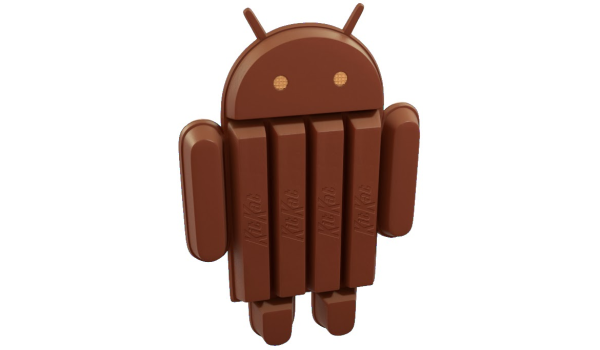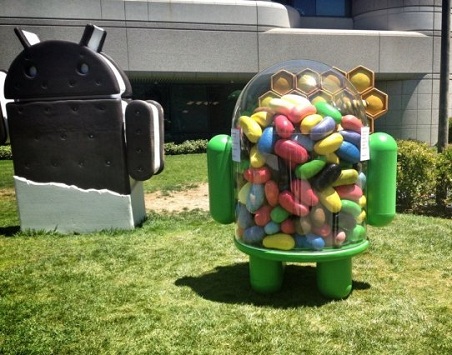
How to Install Android 6.0 Marshmallow on Nexus 5, 6, 7, 9 using Windows PC or Mac
Google has released Android 6.0 Marshmallow, the latest iteration of its mobile operating system. The update will be rolled out over the air for a number of handsets starting from Nexus 6, Nexus 5, Nexus 7 (2013), and Nexus 9, but you can speed up the process by using the factory images.
As you might be familiar, factory images need to be installed on your device manually. In case you don't remember the procedure, here's how you can get the latest flavor of Android on your device.

Google releases Android 5.1 Lollipop factory images -- here's how you can install it
The latest Lollipop incarnation may been have around for more than a month now, first arriving on Android One smartphones slated for Indonesia, but Google only yesterday made the official announcement, and revealed the much-awaited changelog. The good news doesn't end there, as the search giant also released a number of Android 5.1 factory images.
Android 5.1 Lollipop packs some pretty major changes. Among them are support for multiple SIMs, a feature that lots of Android vendors have offered for years now, and Device Protection, a feature designed to deter smartphone theft.

Android 5.0.2 Lollipop now available for 2013 Nexus 7, 10 -- here's how you can install and update
Android 5.0 Lollipop is far from perfect, arriving with nasty bugs that have affected battery life, performance, Wi-Fi and more. The first update that Google launched, version 5.0.1, managed to fix some of the problems users have reported, but some major ones persist even to this day. Personally, I am seeing my 2013 Wi-Fi Nexus 7 running excruciatingly slow at times, even with the first update in tow.
Fortunately, Google also launched a second update not long after the first, which fixes even more bugs, however it only launched it for the first-generation Nexus 7. Now, the search giant is making Android 5.0.2 Lollipop available for the 2013 Wi-Fi Nexus 7 and Nexus 10 as well, in the form of new factory images.

Android 5.0.1 Lollipop now available, here's how you can install it
Just like any other first iteration of a major operating system release, Android 5.0 Lollipop is not without its fair share of problems. The main issues that users are reporting are related to battery life, responsiveness and Wi-Fi. Like other 2013 Nexus 7 users, I also have problems every so often with video playback on YouTube, something which did not crop up back in the Android 4.4 KitKat days.
Naturally, most issues will go away with the first or second update. Google is actively working on squashing the reported bugs, proof being that the company just pushed Android 5.0.1 Lollipop to AOSP (Android Open Source Project) and released the accompanying factory images for a number of its devices.

How to install (and update to) Android 5.0 Lollipop on Nexus 4, 5, 7, 10
After launching alongside Nexus 6 and Nexus 9, Android 5.0 Lollipop is now making its way to the rest of Google's family of smartphones and tablets. So, naturally, you want to get it up and running as soon as possible on your older Nexus devices, now that it is finally ready for prime time. And why wouldn't you? The latest version of Android packs lots of sweet changes, chief among them the new design language dubbed Material Design, the new, faster default runtime called ART, battery life improvements, 64-bit support, beefed-up security, new APIs and much, much more.
There are two ways you get Android 5.0 Lollipop on your Nexus device. You can use the OTA update file to update or the factory image to make a clean install. This article will explain how can leverage both to run the latest version of Android on your Nexus 4, Nexus 5, Nexus 7 and Nexus 10.

No CyanogenMod 12 until Android L is ready for prime time
After making factory images available for Nexus 5 and Nexus 7, Google releases the source code for the Android L preview through AOSP (Android Open Source Project) for most of its compatible Nexus devices. And for many enthusiasts this means development for the next CyanogenMod version should kick off shortly.
The team behind the popular custom distribution, however, announces that CyanogenMod 12 development will not start until the final bits of code are available. "'So let's get the flood-gates started on CM 12!' -- right? No", says the team in a new blog post, aptly named The "L" is for Later.

Android 4.4.4 KitKat available now, here's how you can install it
Less than a month after the last Android update launched, Google is now treating Nexus users to another iteration of KitKat. It made its way to the factory images repository first, but is also slowly rolling out over-the-air to compatible smartphones and tablets.
Android 4.4.4 KitKat, build version KTU84P, is available, through a corresponding factory image, for the Nexus 4, Nexus 5, 2012 Wi-Fi Nexus 7, 2013 Wi-Fi Nexus 7, and Nexus 10. The Nexus 7 slates with cellular connectivity (3G and 4G, launched in 2012 and 2013, respectively) have yet to receive the same treatment.

Android 4.4.3 KitKat available now, here's how you can install it
Google Nexus 4, 5, 7 and 10 users are in for a treat, as Android 4.4.3 KitKat is now rolling out. The latest version of the operating system is also available to customers of US mobile operator T-Mobile, which has revealed the sort of changes users can expect from the upgrade.
Android 4.4.3 KitKat is not a major upgrade over its predecessor, as T-Mobile says there are no new features in tow, but only improvements related to security and the customary fixing of bugs. The US mobile operator lists the upgrade as rolling out starting June 2, for its Nexus-toting customers.

Android 4.4.2 factory images arrive, unofficial changelog reveals security fixes
Google has released new factory images based on Android 4.4.2 KitKat, for the Nexus 4, Nexus 5, Nexus 7 and Nexus 10. This comes a couple of days after the search giant rolled out the latest update for its mobile operating system.
The Android 4.4.2 factory images allow users of said Nexus devices to install, and upgrade to, the latest KitKat version without waiting for the OTA update to arrive. They also come in handy for installing individual bits, like the radio, kernel or recovery, alongside third-party distributions.

Android 4.4.2 KitKat now available, here's how to install it
Mere days after Android 4.4.1 was released, Google is rolling out Android 4.4.2 for compatible Nexus devices. The latest version is more of a modest upgrade, compared to its predecessor which delivered noteworthy improvements to the Nexus 5 camera, as it mostly squashes a few bugs.
Android 4.4.2 fixes issues with clearing and delivery of the VM Indicator, according to US mobile operator Sprint, and other bits of the mobile operating system. There are also security enhancements introduced in the latest version of KitKat.

How to install Android 4.4 KitKat on Nexus 4, 5, 7 and 10
After launching Android 4.4 KitKat alongside the Nexus 5, Google released the latest version of the mobile OS for the Nexus 4, Nexus 7 and Nexus 10. The roll-out of the OTA upgrade kicked off on November 13 and the factory images arrived a couple of days later. Since I have already explained how to use the OTA files to get KitKat up and running, in this article I will show you how to do the same by leveraging the factory images.
Aside from allowing users to install Android 4.4, the KitKat factory images also come in handy for those who wish to upgrade, return their Nexus device to stock before selling it, and install various bits (the radios, the bootloader, etc.) to use with custom Android distributions. As you can tell, the factory images have a broader scope and, therefore, I will also cover the other most important ways you can benefit.

Google releases Android 4.4 KitKat factory images for Nexus 4 and 7
Nexus users love to fiddle with their smartphones and tablets by tearing off the stock software and experimenting with custom Android distributions, kernels, recoveries and whatever else is different from what is offered out-of-the-box. More often than not this all works fine, but it is not uncommon for something to break beyond easy repair. And, that is when Nexus modders turn to Google's factory images for help to return their devices to stock software.
After kicking off the roll-out of the KitKat upgrade, Google released the Android 4.4 factory images for the Nexus 4 and Nexus 7. The Nexus 5 received this treatment right after launch while the Nexus 10 is still waiting for the search giant's stamp of approval.

How to upgrade Nexus 7 and 10 to Android 4.4 KitKat
As expected, Google has started to roll out Android 4.4 KitKat to its Nexus tablet lineup. At the moment, the software upgrade is only heading to the Wi-Fi versions of the Nexus 7 and the Nexus 10, but is slated to reach the cellular models of the smaller tablet too in the upcoming period, as well as the Nexus 4.
The upgrade may be rolling out to compatible tablets as we speak but it will take some time to reach all Nexus 7 and Nexus 10 devices. Luckily, you do not have to wait for the notification to install Android 4.4, as you can get KitKat up and running right now without losing any of your apps and settings or resorting to the modding trickery of loading a custom ROM.

Google starts rolling out Android 4.4 KitKat to Nexus tablets
Up until now, if you wanted to try out Android 4.4 KitKat, there were only two options available -- buy a new Nexus 5 that has the OS preinstalled, or download a custom ROM and roll your own. Now there is a new option, at least if you have a Nexus 7 or Nexus 10, as Google is rolling out the latest version of Android to its flagship tablets.
It is not just owners of the latest Nexus 7 who are in luck as the update is also being made available to the 2012 model. The fact that KitKat is rolling out to older hardware will please many people. Sadly, there has been no change of heart -- not yet, anyway -- for Galaxy Nexus owners hoping for an upgrade.

Jelly Bean closes in on Ice Cream Sandwich
Jelly Bean may be the newest sweet in the family, but it is steadily gaining ground against its older brothers. Combined, Android 4.1 and Android 4.2 reached a 25 percent distribution level in the green droid realm, based on the number of devices accessing Google Play during the 14 days ending April 2.
Starting this month, Google has decided to alter how the data is collected. Google says: "Beginning in April, 2013, these charts are now built using data collected from each device when the user visits the Google Play Store. Previously, the data was collected when the device simply checked-in to Google servers". Why? Because the company considers the new collection method to be more accurate and that it best represents "users who are most engaged in the Android and Google Play ecosystem".
